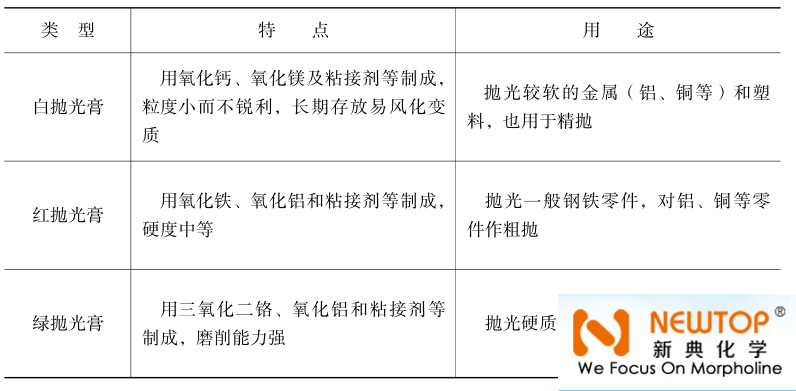Pre-treatment for electroplating: polishing
|
Polishing can be divided into rough polishing, medium polishing and fine polishing. Rough polishing is to use a hard wheel to polish the surface that has been or has not been polished. It has a certain grinding effect on the substrate and can remove rough wear marks. Medium polishing is to use a harder polishing wheel to further process the rough polished surface. It can remove scratches left by rough polishing and produce a medium-gloss surface. Fine polishing is the final process of polishing, polishing with a soft wheel to obtain a mirror-bright surface. It has little effect on the grinding of the substrate. (1) Polishing wheel The polishing wheel is made of different cloths, and the main structural forms are as follows: 1. Stitched type: It is made by stitching cloth pieces. Stitching methods include concentric circle, radial, radial arc, spiral, square, etc. Depending on the stitch density and fabric, polishing wheels with different hardness can be made, and this type of wheel is mainly used for rough polishing. 2. Non-stitched type: It has two types: disc type and flap type. All are assembled into soft wheels with cloth pieces, which are specially used for fine polishing. The service life of the wing type is longer. 3. Folding type: the round cloth is folded in two or three to form a “bag shape”, and then alternately stacked. The polishing wheel is easy to store polishing agent, has good elasticity, and is beneficial to air cooling. 4. Wrinkle type: Cut the cloth roll into 45-angle cloth strips, sew into a continuous, biased roll, and then wrap the cloth roll around a grooved cylinder to form a wrinkle shape . The center of the wheel can be inlaid with cardboard so that the wheel can be matched with the crankshaft. Steel wheels with ventilation can also be installed (this kind of form is better). This kind of polishing wheel is characterized by good heat dissipation and is suitable for high-speed polishing of large parts. (2) Polishing agent 1. Polishing paste Polishing paste is made by mixing polishing abrasives and bonding agents (such as stearic acid, paraffin wax, etc.), and can be purchased on the market. Its classification, characteristics and uses are shown in the figure below
2. Polishing liquid The polishing abrasive used in the polishing liquid is the same as the polishing paste, but the former is used at room temperature, in the form of liquid oil or water emulsion (flammable substances are not allowed), and is used to replace the solid adhesive in the polishing paste. It is a liquid polishing agent. When using polishing liquid, pressurized feed box, high-position feed box or pump to hit the spray gun, and then spray it on the polishing wheel. The pressure of the feed box or the power of the pump is determined by factors such as the viscosity of the polishing liquid and the required supply volume. Since the polishing liquid can be continuously supplied at a constant speed as required, the wear on the polishing wheel can be reduced. Will not leave too much polishing agent on the surface of the part, and can improve production efficiency. |



